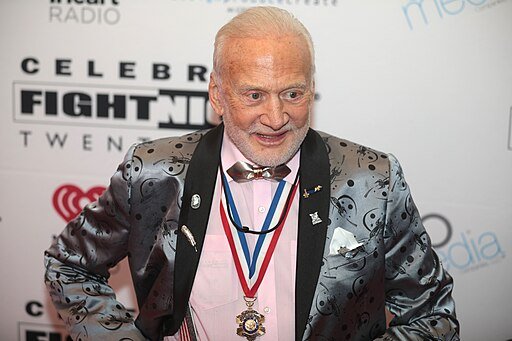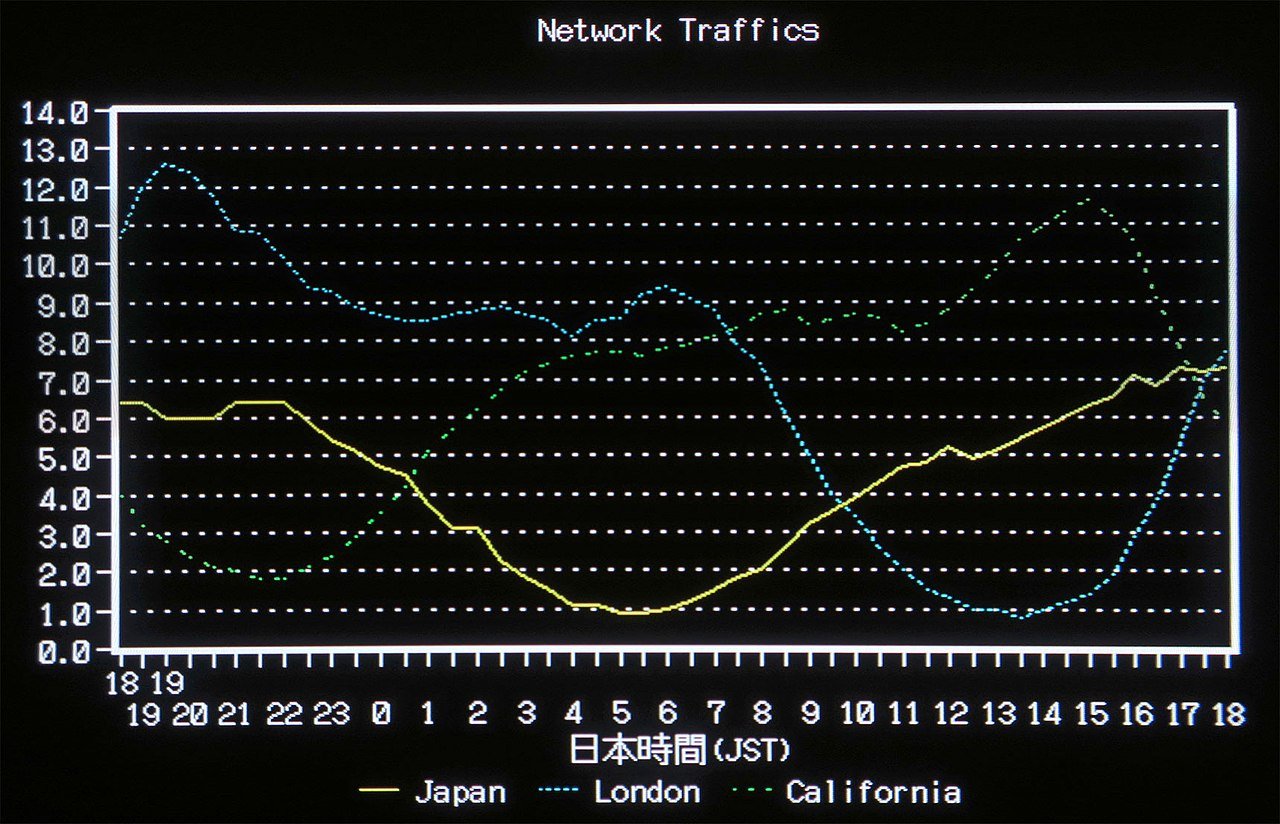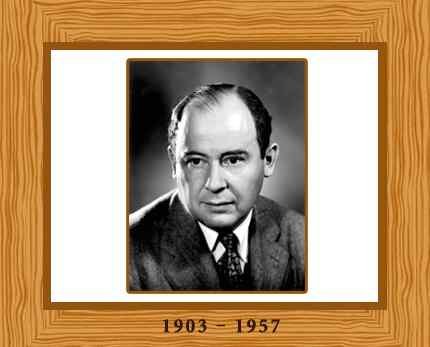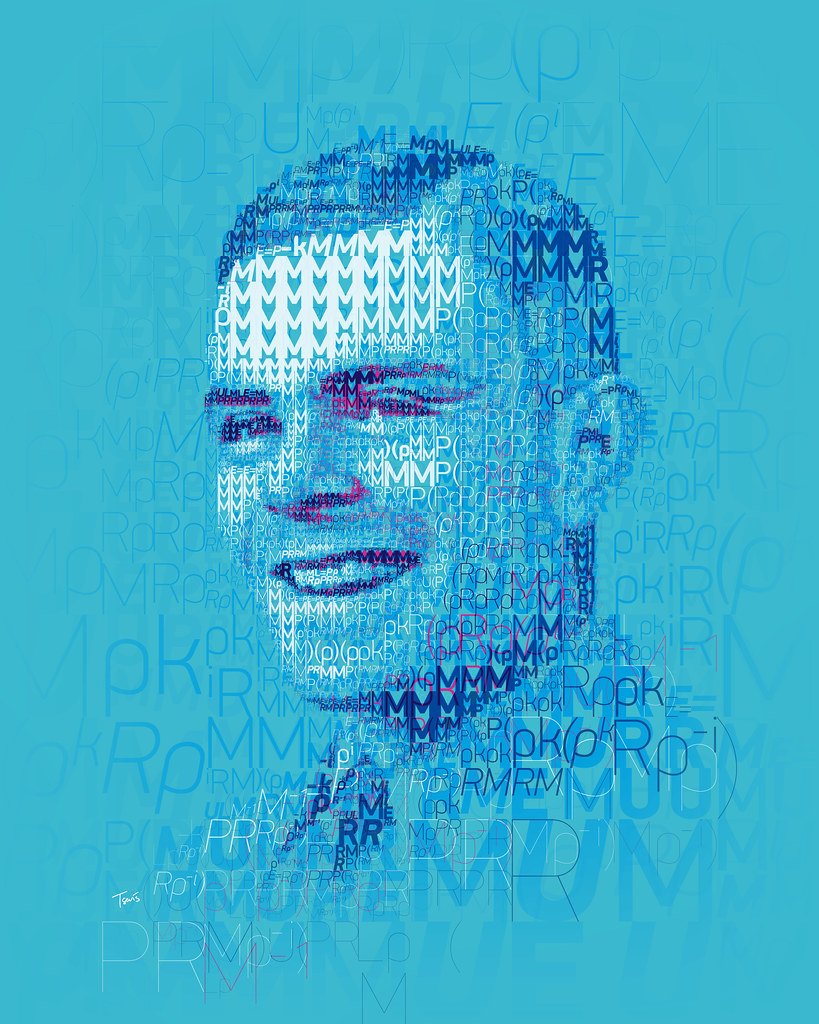John von Neumann, a luminary in the realms of mathematics, physics, computer science, and economics, etched his legacy as an influential figure of the 20th century. Born in Budapest in 1903, his intellectual acumen and relentless pursuit of knowledge propelled him into the echelons of scientific brilliance. His pioneering contributions spanned diverse disciplines, yet it is his profound influence on artificial life that remains an indelible mark on scientific inquiry.
Central to von Neumann’s legacy is his exploration and conceptualization of cellular automata—a computational model consisting of a grid of cells that evolve through discrete time steps based on simple rules. His seminal work in the mid-20th century laid the groundwork for understanding emergent complex behaviors and simple local interactions within these systems. Von Neumann envisioned these cellular automata as a means to simulate lifelike processes, where patterns and behaviors akin to living organisms could emerge from the interactions of individual components, a fundamental notion in the study of artificial life.
Moreover, his contributions to computer architecture were revolutionary. Von Neumann’s design of the Von Neumann architecture, which featured a central processing unit (CPU) accessing instructions and data from a shared memory, became the blueprint for modern computers. This architecture’s significance in enabling the manipulation of data and instructions within a unified framework laid the groundwork for the computational frameworks essential to artificial life research.
In the quest to comprehend and replicate life artificially, von Neumann’s visionary insights and theoretical innovations continue to resonate profoundly. His concepts underpinning cellular automata and their potential to mimic life’s behaviors within computational systems form the bedrock of artificial life studies. His intellectual breadth and pioneering spirit position him as a true founding father in the exploration of artificial life, leaving an enduring legacy that transcends disciplines and continues to shape the scientific landscape to this day.
Table of Contents
What is von Neumann’s theory?
John von Neumann made significant contributions across multiple fields, including mathematics, physics, computer science, and economics. One of his notable theories, the Von Neumann architecture, revolutionized computer design and laid the groundwork for modern computing. This architecture introduced the concept of a stored-program computer, where instructions and data are stored in the same memory, enabling the CPU to retrieve and manipulate both. Von Neumann’s design included a central processing unit (CPU), memory, input/output, and a control unit that coordinates operations, allowing for the execution of stored instructions sequentially.
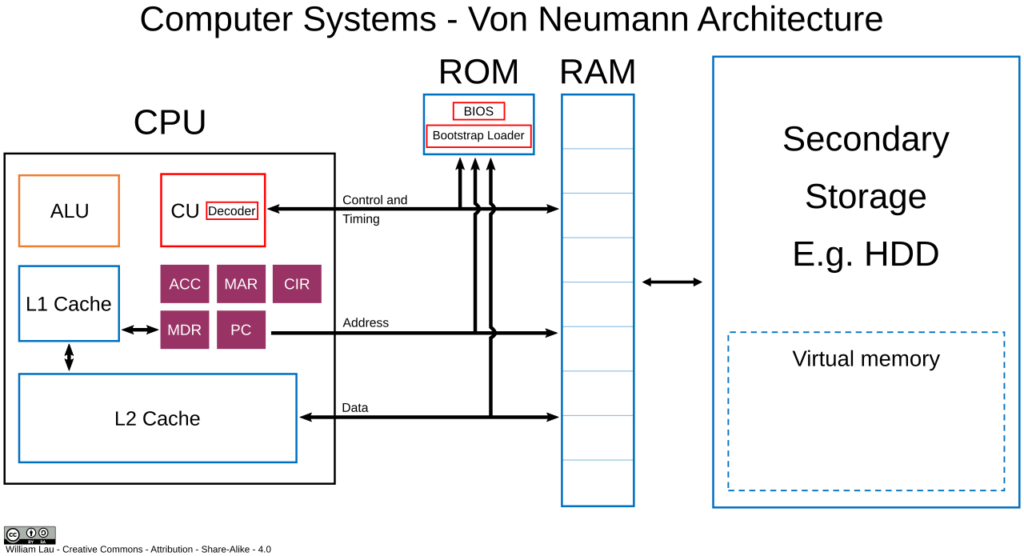
His theory emphasized the importance of a universal computing machine capable of executing various tasks through the manipulation of stored instructions, fundamentally shaping the development of computers. This architectural model’s versatility and capability to process instructions from memory-transformed computing provide the framework for contemporary computer systems and serve as the basis for computational advancements in artificial intelligence, data processing, and scientific simulations.
Who is the father of game theory?
The father of game theory is John von Neumann, a brilliant polymath whose contributions spanned mathematics, physics, computer science, and economics. Alongside mathematician Oskar Morgenstern, von Neumann laid the foundation for game theory with their collaborative work in the 1940s. Their groundbreaking book “Theory of Games and Economic Behavior,” published in 1944, formalized the principles of game theory and its applications in various fields.
Von Neumann’s interdisciplinary genius enabled him to perceive games not merely as recreational activities but as mathematical models representing strategic interactions among decision-makers. Game theory provided a framework to analyze and predict the outcomes of situations where the success of one participant’s choices depends on the choices made by others, thus finding applications in economics, political science, biology, and beyond.
Von Neumann’s significant contributions to game theory included defining the concept of a “zero-sum game,” introducing the minimax theorem, and developing the notion of strategic equilibrium, known as the Nash equilibrium (named after mathematician John Nash). His seminal work laid the groundwork for understanding strategic decision-making, revolutionizing various fields, and earning him well-deserved recognition as the father of game theory.
John von Neumann: The Founding Father of Artificial Life
John von Neumann, an intellectual luminary whose brilliance traversed mathematics, physics, computer science, and economics, is revered as a pioneering figure in the realm of artificial life. His profound insights and visionary contributions laid the groundwork for the exploration and conceptualization of lifelike behaviors within computational systems, particularly through his pioneering work on cellular automata. Von Neumann’s multidisciplinary genius and seminal innovations continue to resonate profoundly in the fields of computer science, biology, and artificial intelligence, solidifying his position as the founding father of artificial life.

Early Life and Genius Emergence
Born in Budapest in 1903, John von Neumann emerged as a prodigious intellect, showcasing extraordinary cognitive abilities from his early years. His exceptional talents traversed multiple domains, encompassing mathematics, physics, computer science, and economics, thus establishing a robust foundation for his groundbreaking interdisciplinary contributions.
From an early age, von Neumann exhibited an insatiable curiosity and an innate grasp of complex concepts, setting the stage for his future as a polymath. His proficiency in mathematics, evident in his mastery of advanced mathematical theories, formed the cornerstone of his multifaceted genius. Von Neumann’s grasp of physics extended to quantum mechanics and statistical physics, showcasing his prowess in understanding the fundamental principles governing the universe.
Moreover, his insights into computer science and pioneering work in computer architecture set a precedent for modern computing, introducing revolutionary concepts that continue to shape technological advancements. Simultaneously, von Neumann’s contributions to economics, mainly through his foundational work in game theory, revolutionized strategic decision-making analysis.
Von Neumann’s early display of unparalleled intellectual prowess across diverse disciplines laid the groundwork for his later interdisciplinary contributions, leaving an indelible mark on various fields and solidifying his position as one of the most influential scientists of the 20th century.
Contributions to Game Theory
Collaborating alongside Oskar Morgenstern, John von Neumann spearheaded the inception of game theory with their groundbreaking publication, “Theory of Games and Economic Behavior.” This seminal work, released in 1944, marked a significant milestone in the understanding of strategic decision-making within competitive scenarios. Von Neumann’s and Morgenstern’s collaboration revolutionized multiple disciplines by applying mathematical principles to analyze and predict interactions between decision-makers.
Von Neumann’s contributions were pivotal in formalizing fundamental concepts within game theory. He notably introduced and defined critical notions like zero-sum games, where one player’s gain directly corresponds to another player’s loss. Moreover, he introduced the minimax theorem, a cornerstone principle in strategic decision-making analysis. This theorem aimed to minimize potential losses in scenarios where adversaries seek to maximize their gains.
The impact of von Neumann’s contributions extended beyond academia, permeating diverse fields such as economics, political science, biology, and military strategy. His work laid the groundwork for understanding strategic interactions, influencing the development of decision-making models, and fostering a more profound comprehension of complex systems involving multiple stakeholders. Von Neumann’s legacy in game theory remains foundational, shaping contemporary studies in various disciplines and solidifying his stature as a pioneering figure in strategic analysis and mathematical modeling.
Theoretical Innovations in Computing
John von Neumann stands as a cornerstone figure in computer science, primarily for his seminal contributions to computer architecture that revolutionized modern computing. His groundbreaking design, known as the Von Neumann architecture, introduced fundamental concepts that remain integral to computing systems today. At its core, this architecture implemented a pivotal innovation: a central processing unit (CPU) capable of accessing both instructions and data from a shared memory unit.
The Von Neumann architecture provided a unified framework for storing and executing instructions, enabling computers to perform various tasks efficiently. It introduced a sequential execution model, where instructions are fetched, decoded, and executed one after another, fundamentally shaping the way computers process information. This paradigm became the blueprint for the design of most modern computers, offering a standardized structure that allowed for rapid advancements in computing technology.
Von Neumann’s architectural blueprint not only streamlined data processing but also laid the groundwork for the development of more complex computing systems. Its influence extends beyond hardware design, impacting software development, algorithmic advancements, and the evolution of computational capabilities.
Through his innovative architectural design, John von Neumann fundamentally transformed the landscape of computing. His visionary contributions set the stage for the remarkable technological advancements that have propelled the digital age, solidifying his legacy as a trailblazer in the field of computer science.
Pioneering Work in Cellular Automata
John von Neumann’s exploration of cellular automata stands as a cornerstone in the genesis of artificial life. Through his visionary insights into computational models governed by simplistic rules generating intricate behaviors, von Neumann laid a pivotal foundation for the burgeoning field. Cellular automata, envisaged as grids of cells evolving through discrete steps based on defined rules, became the canvas upon which von Neumann sketched the possibilities of simulating life-like processes.

His conceptualization of these systems as a tool to replicate organic behaviors within computational frameworks showcased unparalleled foresight. Von Neumann’s realization that complex, emergent behaviors could arise from the interaction of simple components within these automata propelled the understanding of how life-like phenomena could be modeled and comprehended through mathematical and computational means.
This innovative approach opened pathways for researchers to investigate and simulate biological phenomena, spawning a new frontier in scientific inquiry. Von Neumann’s foundational work in exploring how rudimentary rules in cellular automata could give rise to intricate and lifelike behaviors remains pivotal in the study of artificial life, serving as an enduring testament to his visionary intellect and the profound impact of his contributions to the scientific landscape.
Foundational Role in Artificial Life
John von Neumann’s visionary pursuit of simulating life within computational systems stands as a cornerstone in the foundation of artificial life studies. His conceptualization and exploration of cellular automata, computational models governed by simple rules yet capable of exhibiting remarkably complex behaviors, epitomized von Neumann’s groundbreaking contributions to the field.
His vision extended beyond mere computational exercises; he envisaged these cellular automata as a means to replicate and comprehend organic behaviors. Von Neumann’s foresight in perceiving these systems as a tool to simulate life’s intricate processes highlighted his exceptional insight and innovative thinking.
Through his foundational work, von Neumann delineated the potential of cellular automata to emulate lifelike behaviors, setting the stage for further advancements in artificial life research. The fundamental premise that emergent complexities could arise from simple local interactions within these computational systems underscored von Neumann’s foresight and ingenuity. His visionary outlook paved the way for subsequent explorations, inspiring generations of scientists to delve deeper into understanding and replicating life-like phenomena within computational frameworks, solidifying his enduring legacy as a pioneering force in the realm of artificial life.
Enduring Legacy and Impact
John von Neumann’s enduring legacy in the scientific landscape resonates across diverse disciplines, echoing his multidimensional genius and groundbreaking theoretical innovations. His contributions, spanning mathematics, physics, computer science, and economics, remain foundational pillars in the quest to comprehend and emulate life through artificial avenues. Von Neumann’s visionary insights, particularly in the domain of artificial life, where he laid the groundwork for simulating lifelike behaviors within computational systems through his exploration of cellular automata, stand as testament to his pioneering spirit.
His profound impact on computer science, notably with the design of the Von Neumann architecture, established a fundamental framework for modern computing. Furthermore, his trailblazing role in game theory, defining key concepts and theorems, reshaped strategic decision-making analysis across various fields.
Von Neumann’s legacy as a trailblazer in artificial life endures through his foresight and foundational contributions. His concepts continue to inspire contemporary research, driving advancements in understanding emergent complex behaviors and computational modeling of biological systems. His immeasurable influence transcends generations, firmly positioning him as a trailblazer whose visionary quest to comprehend and replicate life through artificial means continues to shape and influence scientific exploration and innovation.
Legacy Beyond His Time
John von Neumann’s principles and concepts stand as enduring pillars in the ongoing exploration of artificial life and complex systems. His visionary insights into cellular automata, wherein simple rules govern the emergence of intricate behaviors, continue to underpin modern research endeavors. Von Neumann’s foundational work remains integral to the fabric of contemporary scientific inquiry, providing the scaffolding upon which present-day scientists build and delve deeper into the understanding of lifelike processes within computational frameworks.
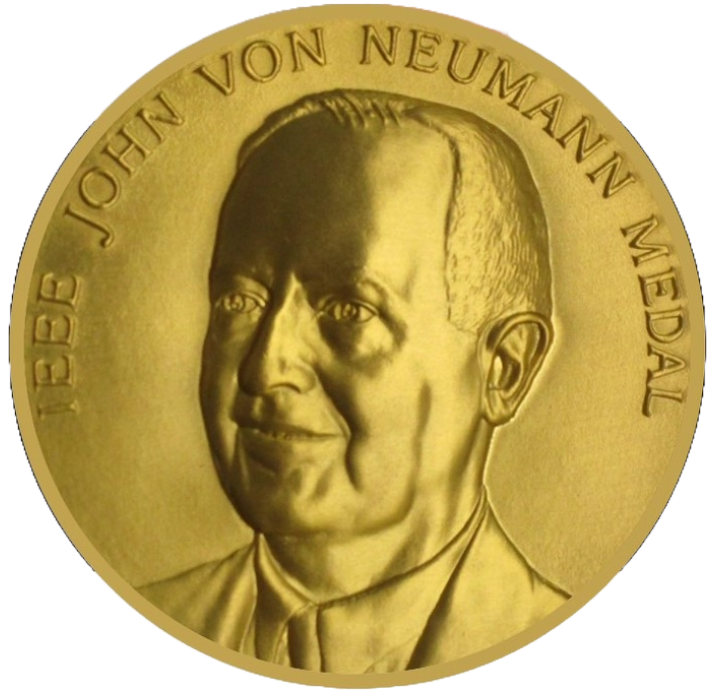
His legacy transcends temporal boundaries, serving as an inspiration for generations of researchers. Contemporary scientists, recognizing the profundity of von Neumann’s contributions, stand upon the shoulders of his intellectual legacy, expanding and refining his theories. They navigate the intricate landscapes of artificial life, seeking to replicate and understand the essence of living systems within computational models. Von Neumann’s pioneering spirit echoes in their pursuits, motivating a continuous quest to unlock the mysteries of life through computational paradigms. As researchers forge ahead, they honor von Neumann’s legacy by leveraging his foundational concepts to unravel the complexities inherent in artificial life, thereby perpetuating the timeless impact of his visionary ideas.
Influence on Scientific Landscape
John von Neumann’s enduring impact on the scientific landscape transcends temporal boundaries, forging an intellectual legacy that resonates across generations. His visionary insights and groundbreaking contributions, particularly in the realm of artificial life, have become an enduring source of inspiration for researchers worldwide. Von Neumann’s far-reaching influence extends beyond his era, shaping diverse fields and fostering interdisciplinary collaborations that push the boundaries of knowledge.
His seminal work on cellular automata, conceived as a framework to simulate lifelike behaviors within computational systems, remains a cornerstone in the study of artificial life. The fundamental principles he laid down continue to guide contemporary research, inspiring scientists to delve deeper into understanding the complexities of biological systems through computational modeling.
Von Neumann’s multidisciplinary genius not only propelled the fields of computer science, biology, and artificial intelligence but also encouraged cross-disciplinary exploration. His insights into the potential of computational systems to replicate lifelike phenomena have sparked a renaissance in interdisciplinary studies, fueling collaborative efforts aimed at unraveling the mysteries of life itself.
As researchers continue to navigate the frontiers of artificial life and computational biology, von Neumann’s visionary contributions serve as a guiding beacon, driving the quest for deeper insights and innovative advancements. His legacy persists as a catalyst for ongoing exploration, inspiring scientists to push the boundaries of knowledge and delve further into the intricacies of life’s computational underpinnings.
John von Neumann’s unparalleled intellect and far-reaching contributions across various disciplines firmly establish him as the founding father of artificial life. His visionary exploration of cellular automata, groundbreaking advancements in computer architecture, and foundational role in game theory represent keystones in scientific progress. Von Neumann’s profound insights into cellular automata, computational models simulating complex behaviors from simple rules, provided a gateway to understanding lifelike processes within computational frameworks. His legacy persists through the enduring relevance of his concepts, fostering continuous investigation into lifelike behaviors in computational systems. Von Neumann’s legacy extends beyond his time, influencing ongoing scientific exploration and cementing his status as a colossal figure in the chronicles of scientific history.

